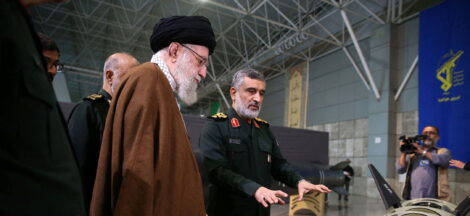By Satyaki Chakraborty
The global economic outlook has worsened since the start of the year 2025, as rising economic nationalism and tariff volatility fuel uncertainty and risk stalling long-term decision-making, according to a World Economic Forum report released on Wednesday in Geneva.
The latest Chief Economists Outlook reveals that a strong majority (79%) of surveyed economists view the current geoeconomic developments as signs of a significant structural shift for the global economy rather than a temporary disruption.
“Policymakers and business leaders must respond to heightened uncertainty and trade tensions with greater coordination, strategic agility and investment in the growth potential of transformative technologies like artificial intelligence,” said Saadia Zahidi, Managing Director, World Economic Forum. “These steps are essential for navigating today’s economic headwinds and securing long-term resilience and growth.”
Global uncertainty is seen as exceptionally high by 82% of the chief economists. While a narrow majority (56%) expect conditions to improve over the next year, concerns persist. Nearly all the chief economists (97%) place trade policy among the areas of highest uncertainty, followed by monetary policy (49%) and fiscal policy (35%). This uncertainty is expected to weigh on key economic indicators, including trade volumes (70%), GDP growth (68%) and foreign direct investment (62%).
Most chief economists (87%) anticipate that businesses will respond to uncertainty by delaying strategic decisions, increasing recession risks. Debt sustainability is also a rising concern, cited by 74% of respondents for both advanced and developing economies. An overwhelming majority (86%) expect governments to meet rising defence spending needs through increased borrowing, potentially crowding out investment in public services and infrastructure.
In early April, at the peak of uncertainty, most chief economists (77%) were anticipating weak or very weak growth through 2025 in the US, alongside high inflation (79%) and a weakening dollar (76%). By contrast, they were cautiously optimistic about Europe’s prospects for the first time in years, mainly because of expectations of fiscal expansion, notably in Germany. The outlook for China remains muted, and the chief economists were divided over whether it will reach its target of 5% GDP growth this year. Optimism remains highest for South Asia, where 33% expect strong or very strong growth this year.
According to the Report, Artificial intelligence (AI) is poised to drive the next wave of economic transformation, unlocking significant growth potential but also introducing serious risks. Nearly half (46%) of chief economists expect AI to deliver a modest global real GDP boost of 0-5 percentage points over the next decade, with a further 35% projecting gains of 5-10 points. Key growth drivers include task automation (68%), accelerated innovation (62%) and worker augmentation (49%). Despite its potential, concerns persist: 47% expect net job losses over the next decade, compared to just 19% who expect gains.
Above all, respondents highlighted the misuse of AI for disinformation and societal destabilization as the top risk to the economy (53%). Other key risks include rising concentration of market power (47%) and disruption of existing business models (44%).
To fully harness AI’s potential, the chief economists emphasized the need for bold action from both governments and businesses. For governments, top priorities include investing in AI infrastructure (89%), promoting adoption across key industries (86%), facilitating AI talent mobility (80%), and investing in upskilling and redeployment (75%). For businesses, the focus is on adapting core processes to integrate AI (95%), reskilling employees (91%) and training leadership to steer AI-driven transformation (83%). (IPA Service)



